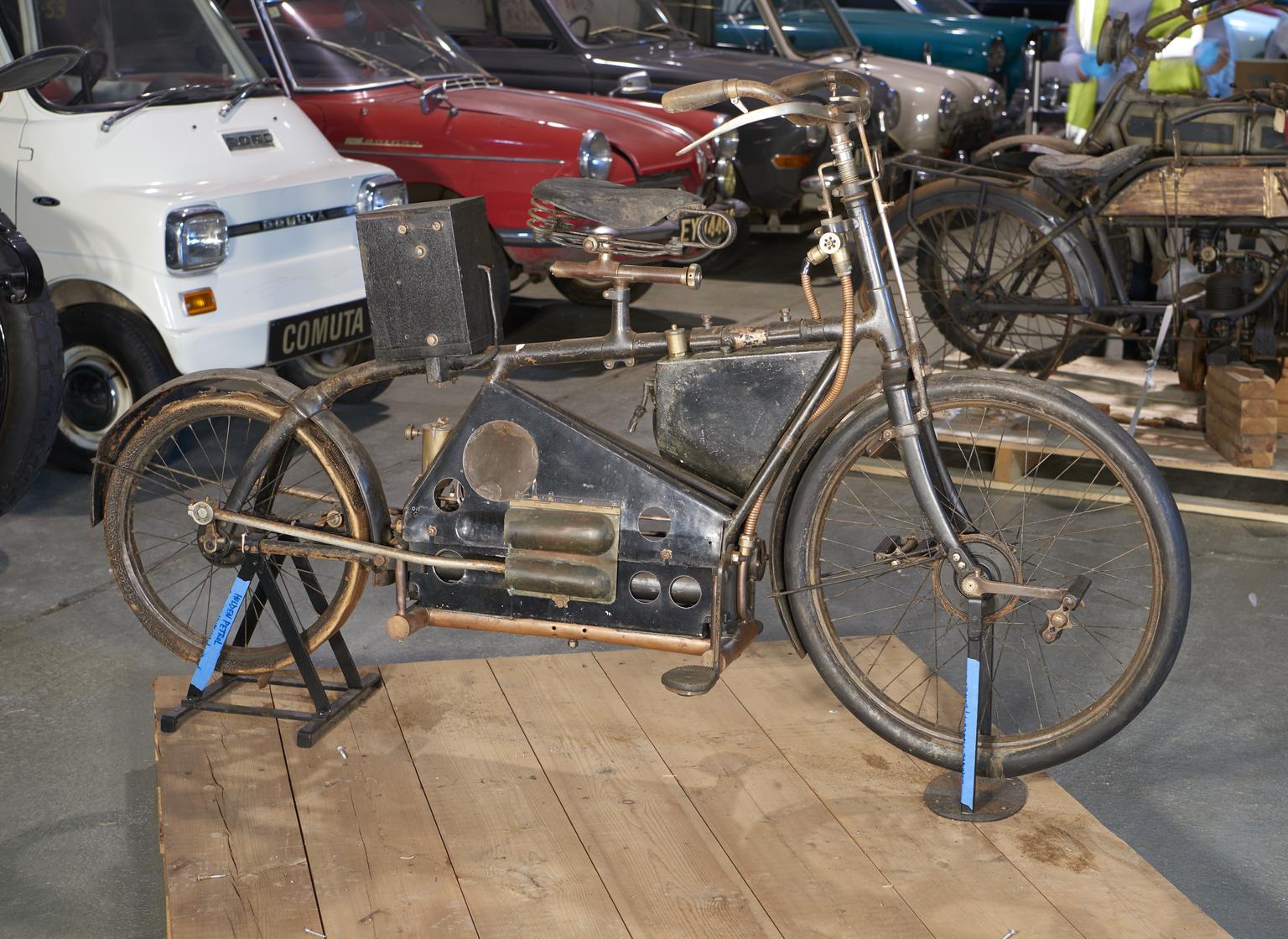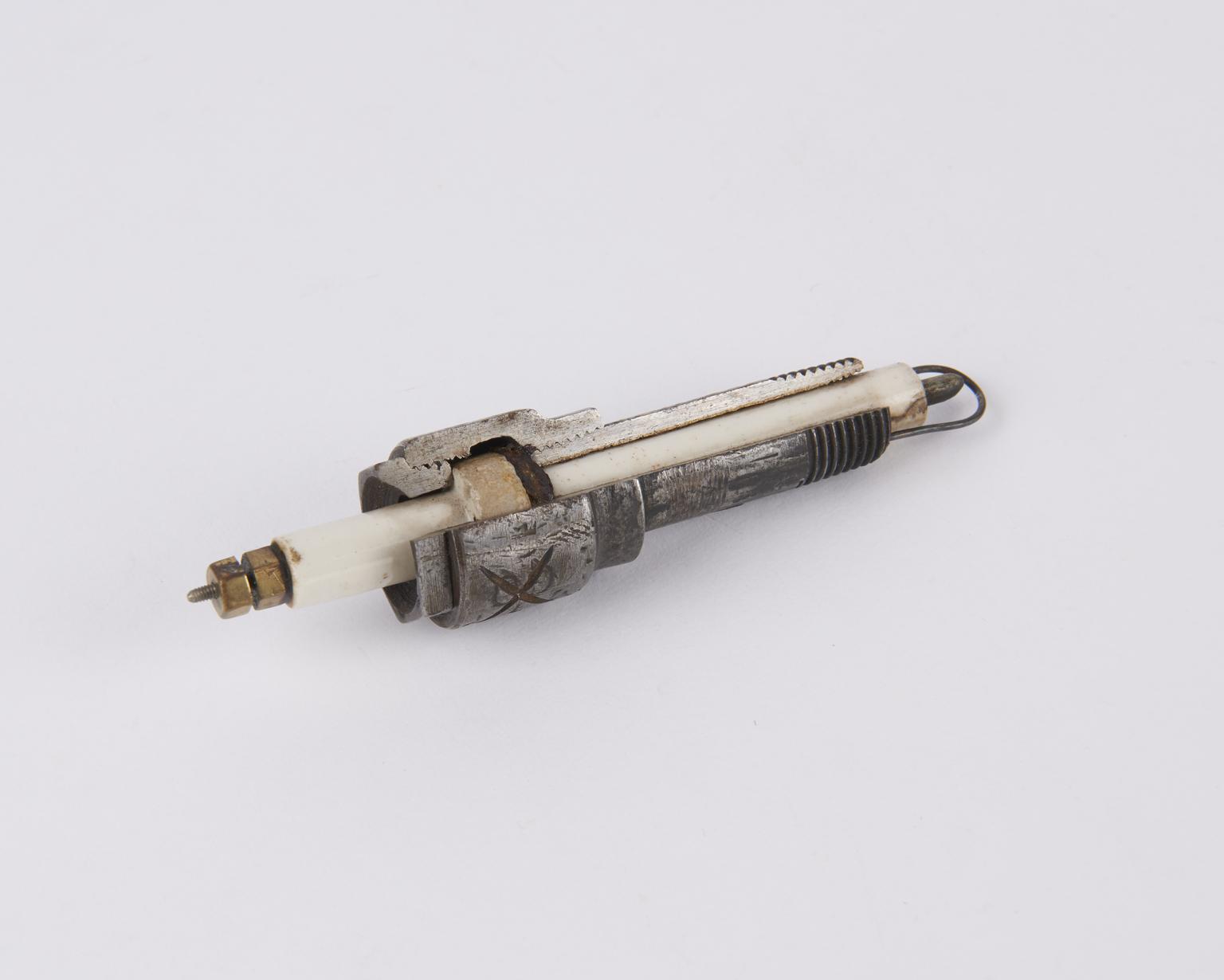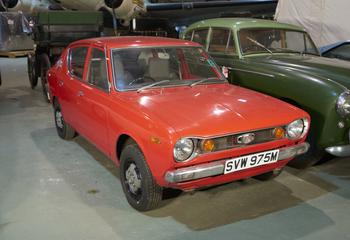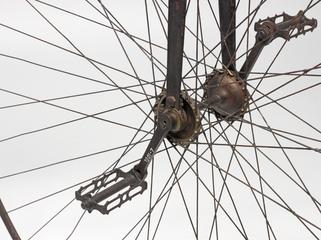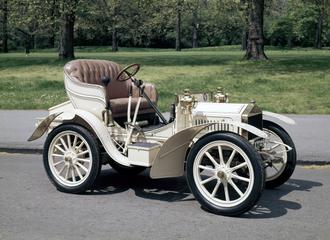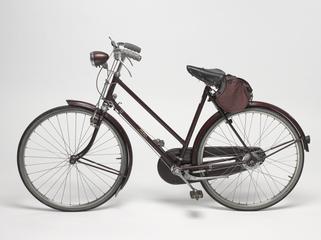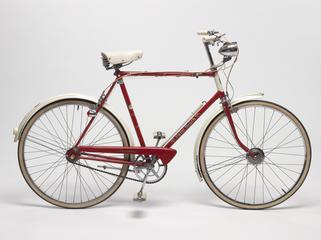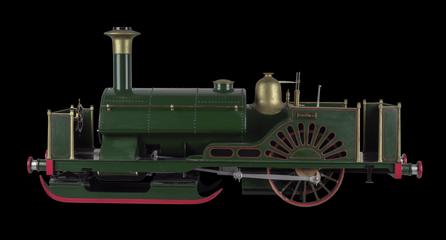Holden's horizontal 4 cylinder direct drive motor bicycle, 1897.
The first petrol motorbicycle was patented and constructed by Daimler in 1885, but it was not until about ten years later that serious attempts were made to produce a practical machine of this type. This motorcycle was patented by General Holden in 1896.
The engine has four horizontal air-cooled cylinders 2.125 in diameter by 4.5 inch stroke. placed two in line at each side and incorporated in the frame. The pistons of each pair of cylinders are in one piece and directly connected with parallel overhung cranks on the axle of the rear driving wheel. The pistons always move together, but there is an impulse at every stroke. The cylinders are steel tubes, fitted into recesses formed in the cylinder head castings at each end which contain the valves. Slots are cut through the cylinder walls at mid length to permit the passage of the cross head pin. The pistons are fitted with three spring rings and an asbestos ring. The inlet and exhaust valves are placed one above the other, the former being automatic and the latter operated by rocking levers moved by cams on a longitudinal shaft driven by a chain and worm gearing from the driving axle.
The carburetor is the surface type and consists of a tank containing the petrol, through which the air passes on its way to the mixing valve mounted on the head tube of the frame. The ignition is by battery and coil.
The front wheel of the bicycle is driven from the pedals by special gearing. The engine develops about 3 h.p. at 430 r.p.m. giving a maximum speed of 20 miles an hour. The complete machine weighs 123 lbs.
